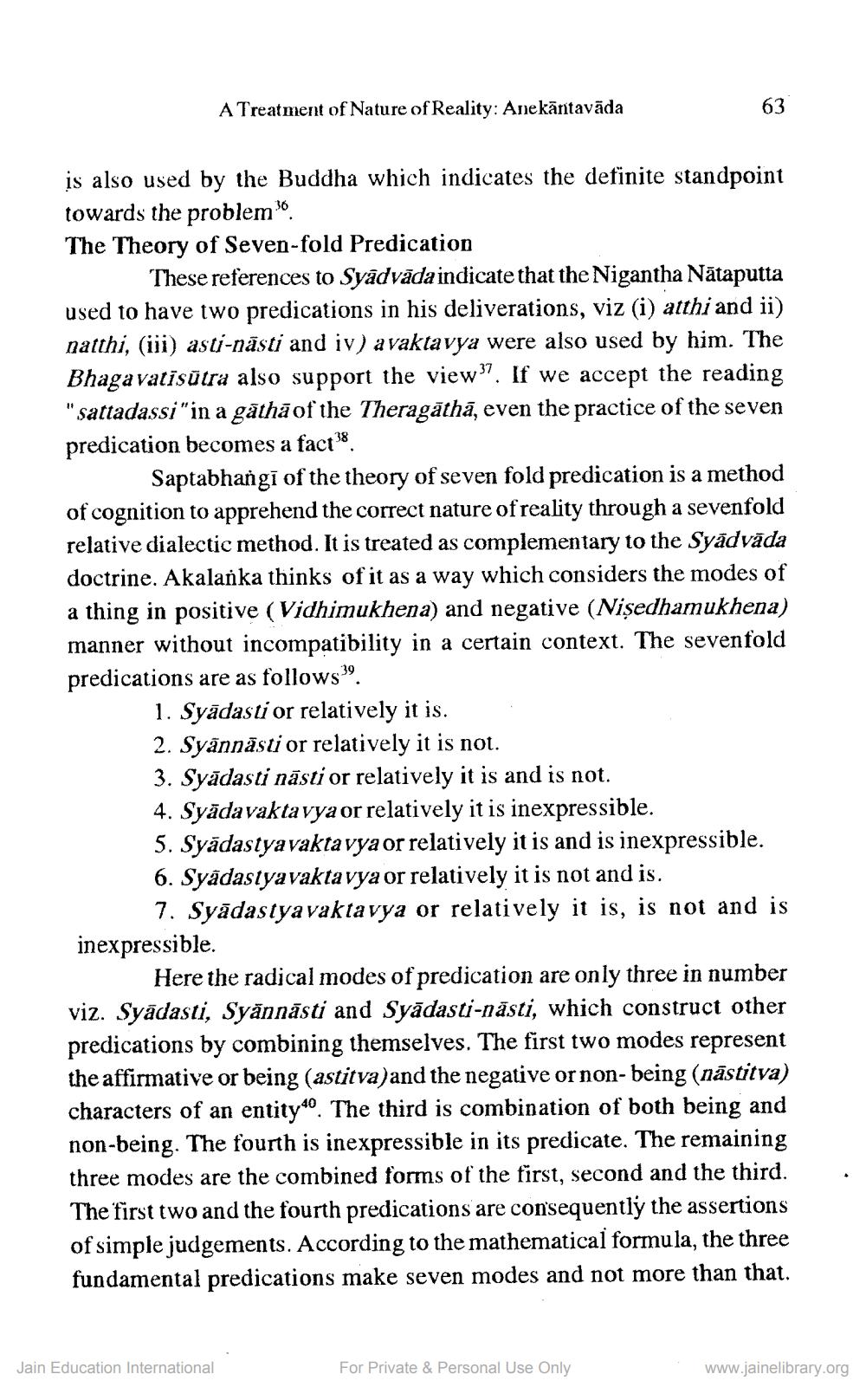________________
A Treatment of Nature of Reality: Anekāntavāda
63
is also used by the Buddha which indicates the definite standpoint towards the problem The Theory of Seven-fold Predication
These references to Syādvāda indicate that the Nigantha Nātaputta used to have two predications in his deliverations, viz (i) atthi and ii) natthi, (iii) asti-năsti and iv) avaktavya were also used by him. The Bhagavatīsutra also support the view. If we accept the reading "sattadassi" in a gāthā of the Theragāthā, even the practice of the seven predication becomes a fact 18.
Saptabhangi of the theory of seven fold predication is a method of cognition to apprehend the correct nature of reality through a sevenfold relative dialectic method. It is treated as complementary to the Syādvāda doctrine. Akalanka thinks of it as a way which considers the modes of a thing in positive (Vidhimukhena) and negative (Nişedhamukhena) manner without incompatibility in a certain context. The sevenfold predications are as follows 9.
1. Syādasti or relatively it is. 2. Syānnāsti or relatively it is not. 3. Syādasti nāsti or relatively it is and is not. 4. Syädavakta vya or relatively it is inexpressible. 5. Syādastyavaktavyaor relatively it is and is inexpressible. 6. Syādastyavakta vya or relatively it is not and is.
7. Syādastya vaktavya or relatively it is, is not and is inexpressible.
Here the radical modes of predication are only three in number viz. Syādasti, Syānnāsti and Syādasti-năsti, which construct other predications by combining themselves. The first two modes represent the affirmative or being (astitva)and the negative or non-being (nāstitva) characters of an entity40. The third is combination of both being and non-being. The fourth is inexpressible in its predicate. The remaining three modes are the combined forms of the first, second and the third. The first two and the fourth predications are consequently the assertions of simple judgements. According to the mathematical formula, the three fundamental predications make seven modes and not more than that.
Jain Education International
For Private & Personal Use Only
www.jainelibrary.org




